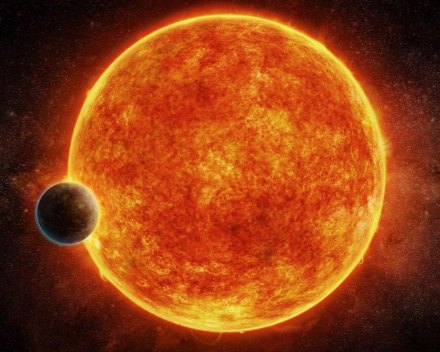Video:
Planet is a candidate in search for life

The planet orbits a red dwarf star, which is cooler than our sun.
Image: M. Weiss, via the European Southern Observatory
The planet orbits a red dwarf star designated LHS 1140, located 40 light-years away in the constellation Cetus, according to a news release on the European Southern Observatory’s website. An international team of astronomers discovered the rocky super-Earth -- LHS 1140b -- orbiting in the habitable zone around the star. Their research is to be published April 20 in the journal Nature.
The planet is actually 10 times closer to its star than the Earth is to the sun, the observatory’s news release explains. It orbits once every 25 days. But red dwarf stars are smaller and cooler than our sun. The planet receives about half as much sunlight as Earth and is in its star’s habitable zone.
The habitable zone is the range of orbits around a star in which a planet could have the temperature needed for liquid water on the surface, the observatory news release explains. The two requirements for life as we know it are liquid water and an atmosphere.
While young red dwarf stars emit radiation that can damage a planet’s atmosphere, this planet may have benefited from exceptional circumstances. “In this case, the planet's large size means that a magma ocean could have existed on its surface for millions of years. This seething ocean of lava could feed steam into the atmosphere long after the star has calmed to its current, steady glow, replenishing the planet with water,” the news release explains.
Researchers estimate the planet to be at least 5 billion years old, with a diameter roughly one and a half times larger than the Earth. They also believe the planet’s mass to be seven times greater than the Earth. It may even be a better target to study than other high-profile planets in habitable zones, such as Proxima b or the TRAPPIST-1 system, the news release said.
The research is to be presented in the article, “A temperate rocky super-Earth transiting a nearby cool star,” by J. A. Dittmann et al., set to appear in the journal Nature on April 20.
Related:
Scientists find seven planets around star
Proxima b may not be in 'habitable zone'
Planet orbiting nearby star could have ocean
Follow StudyHall.Rocks on Twitter.
If you would like to comment, give us a shout, or like us on Facebook and tell us what you think.

